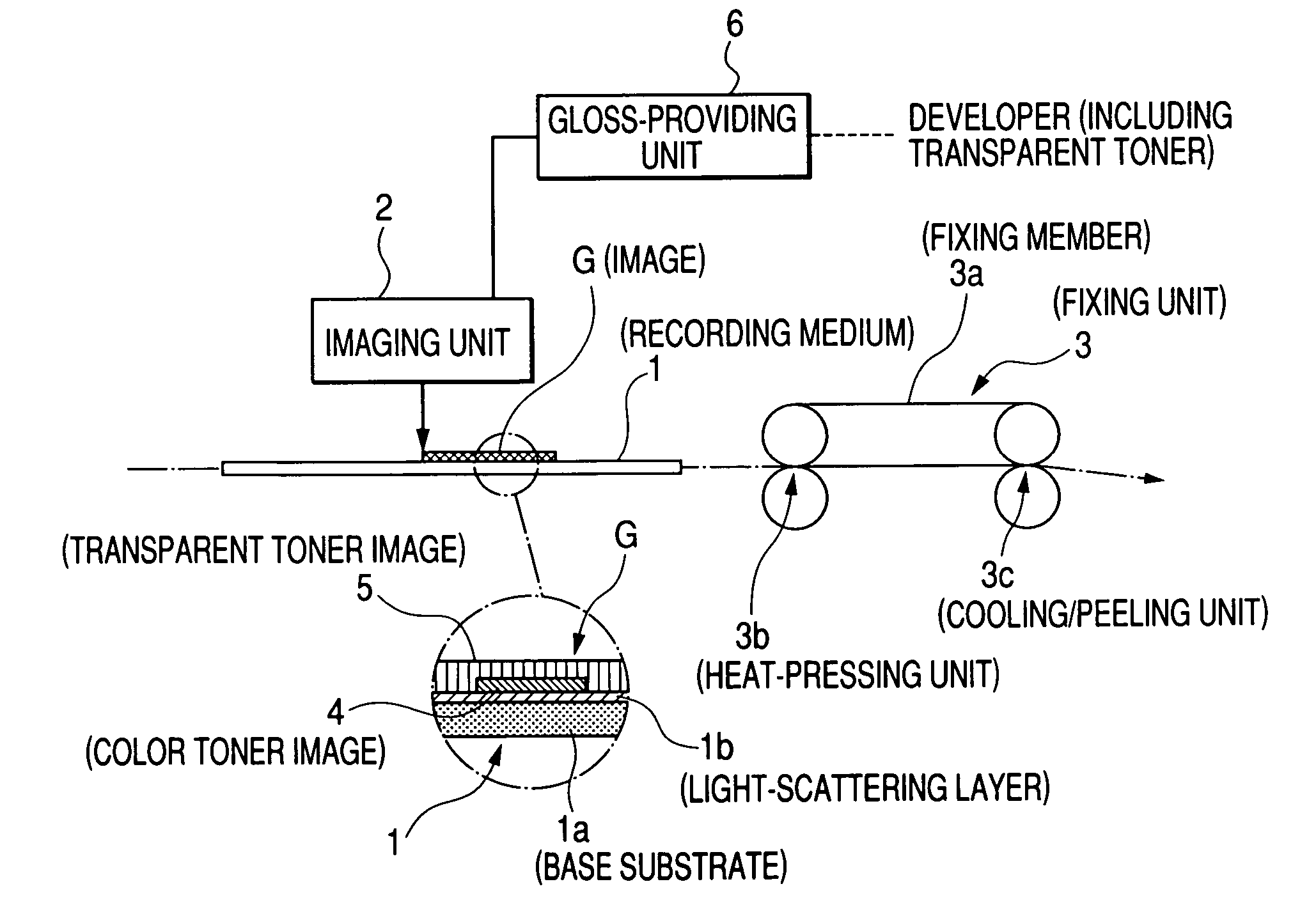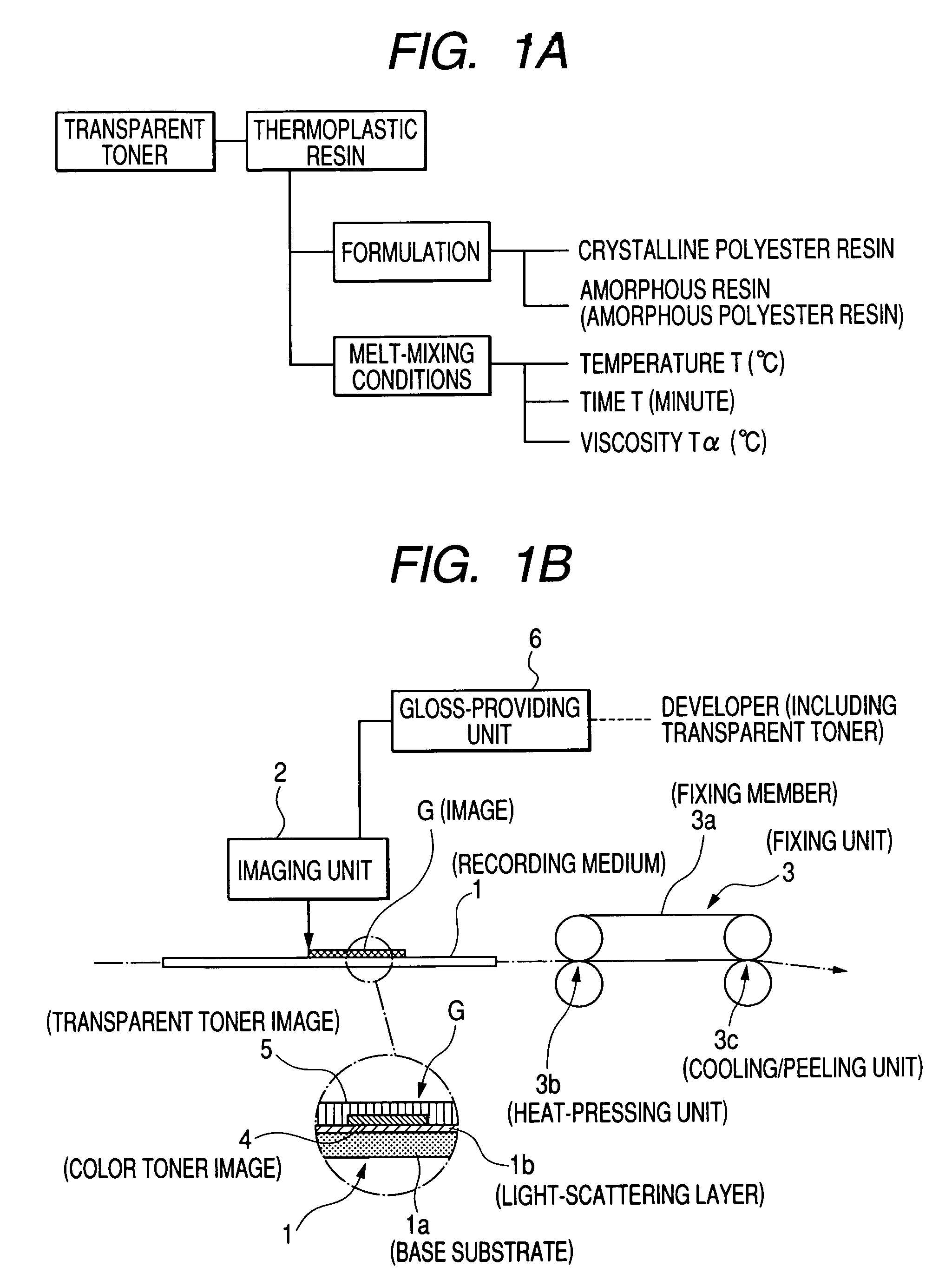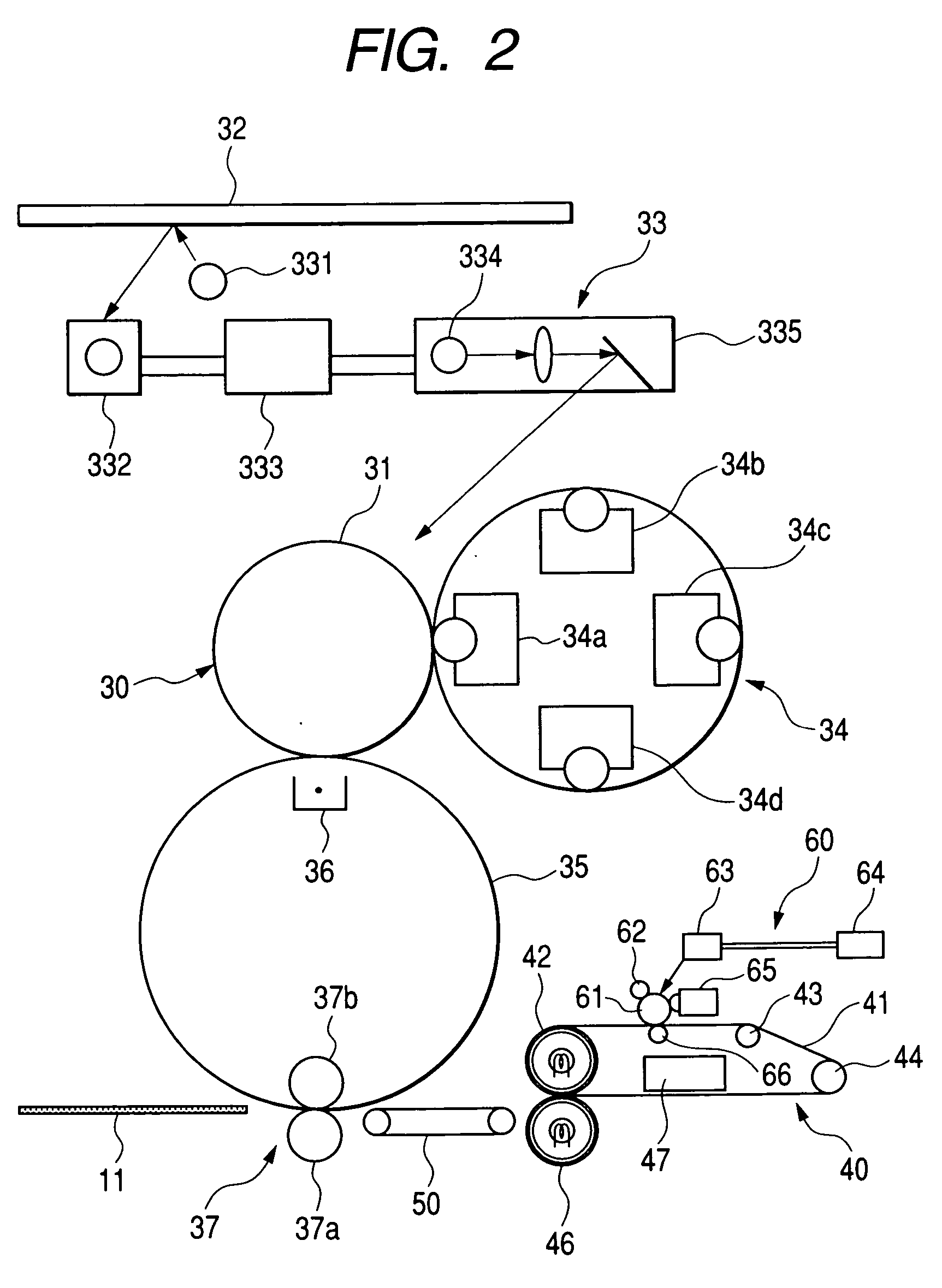Transparent toner, developer including same, gloss-providing unit and image forming device
- Summary
- Abstract
- Description
- Claims
- Application Information
AI Technical Summary
Benefits of technology
Problems solved by technology
Method used
Image
Examples
embodiment 1
[0070]FIG. 2 illustrates the embodiment 1 of the color image forming device to which the invention is applied.
[0071] In FIG. 2, the color image forming device according to the present embodiment includes an imaging unit 30 for forming a color image on a recording medium 11, a fixing unit 40 for fixing various toner images formed on the recording medium 11 by the imaging unit 30 and a conveying unit 50 for conveying the recording medium 11 to the fixing unit 40.
[0072] In the present embodiment, the recording medium is not specifically limited. A resin sheet such as OHP sheet may be used, not to mention ordinary copying paper and regular paper. All sheet-like media on which an image can be formed with a transparent toner according to the present embodiment can be used. A preferred embodiment of the recording medium 11 is a base substrate 11a made of raw paper having a basis weight of from 100 to 200 g / m2 including at least a light-scattering layer 11b having a thickness of from 10 t...
embodiment 2
[0217]FIG. 6 illustrates the embodiment 2 of the color image forming device to which the invention is applied.
[0218] In FIG. 2, the color image forming device includes an imaging unit 30 for forming a photographic image including a color toner image and a transparent toner image, a fixing unit 40 for fixing the various toner image formed on the recording medium 11 by the imaging unit 30 and a conveying unit 50 for conveying the recording medium 11 having an image formed thereon onto the fixing unit 40. Unlike the embodiment 1, the imaging unit 30 includes a transparent toner developing unit 34e provided as a gloss-providing unit inside the rotary developing unit 34 instead of the gloss-providing unit 60 for forming a transparent toner image on the fixing belt 41. Where the constituents are the same as those of the embodiment 1, the same numerals and signs are used. These constituents will not be described in detail.
[0219] The operation of the color image forming device according t...
example 1
Color Toner Developer
[0279] 100 parts by weight of a linear polyester obtained from dimethyl terephthalate, bisphenol A-ethylene oxide adduct and cyclohexane dimethanol (molar ratio=5:4:1; Tg=62° C.; Mn=4,500; Mw=10,000) as a binder resin were mixed with 5 parts by weight of benzidine yellow as a coloring agent in the case of yellow toner, 4 parts by weight of pigment red as a coloring agent in the case of magenta toner, 4 parts by weight of phthalocyanine blue as a coloring agent in the case of cyan toner or 5 parts by weight of carbon black as a coloring agent in the case of black toner. The mixtures were each melt-mixed under heating using a Banbury mixer, ground by a jet mill, and then classified through an air classifier to prepare a particulate material having d50 of 7 μm.
[0280] To 100 parts of the particulate material thus obtained were then attached the following two inorganic particulate materials a and b using a high speed mixer.
[0281] The inorganic particulate materia...
PUM
| Property | Measurement | Unit |
|---|---|---|
| Temperature | aaaaa | aaaaa |
| Temperature | aaaaa | aaaaa |
| Length | aaaaa | aaaaa |
Abstract
Description
Claims
Application Information
 Login to View More
Login to View More - R&D
- Intellectual Property
- Life Sciences
- Materials
- Tech Scout
- Unparalleled Data Quality
- Higher Quality Content
- 60% Fewer Hallucinations
Browse by: Latest US Patents, China's latest patents, Technical Efficacy Thesaurus, Application Domain, Technology Topic, Popular Technical Reports.
© 2025 PatSnap. All rights reserved.Legal|Privacy policy|Modern Slavery Act Transparency Statement|Sitemap|About US| Contact US: help@patsnap.com



